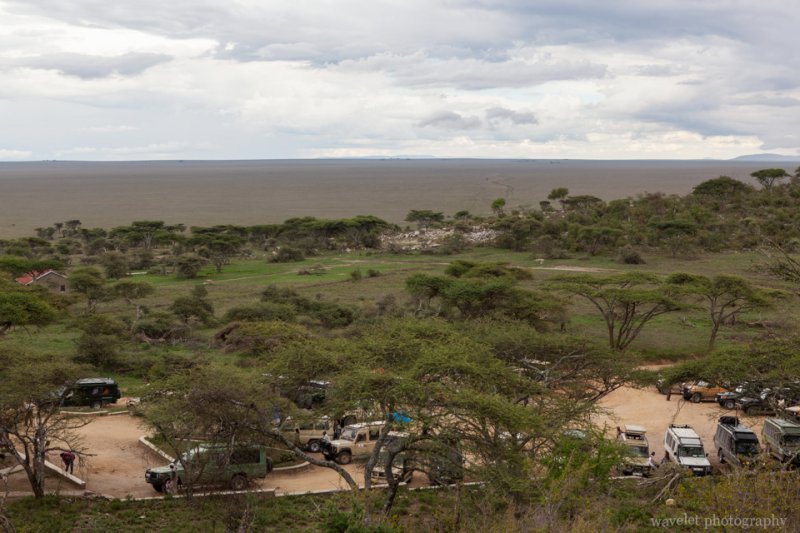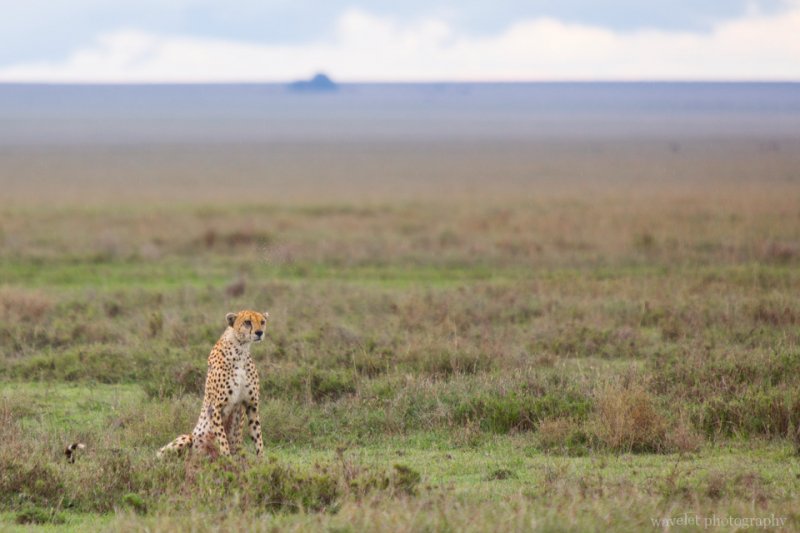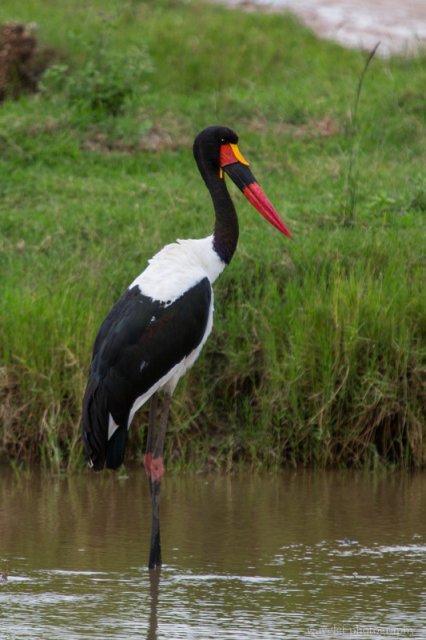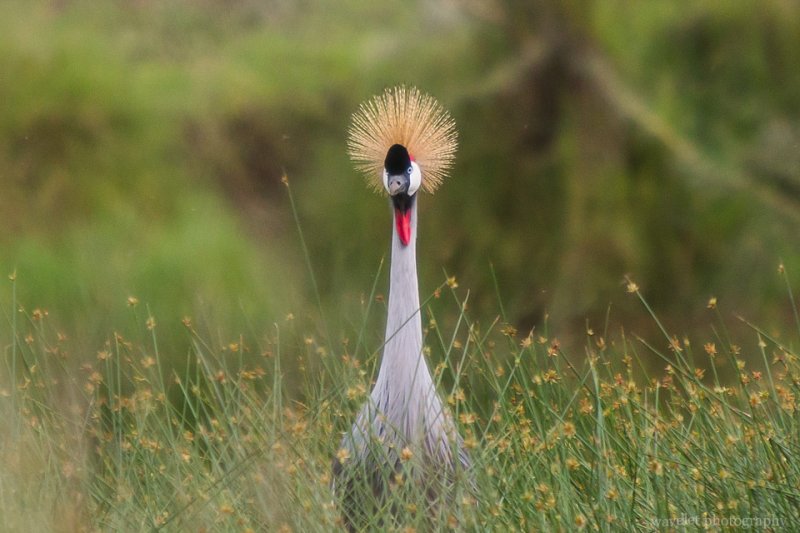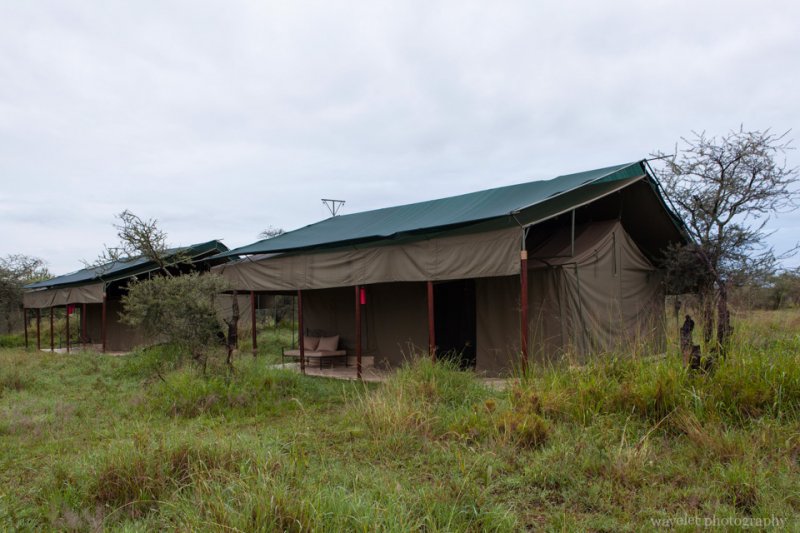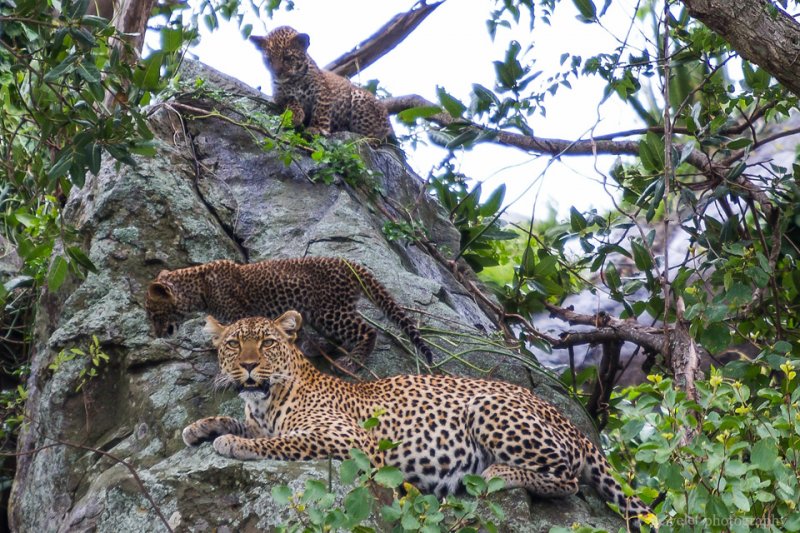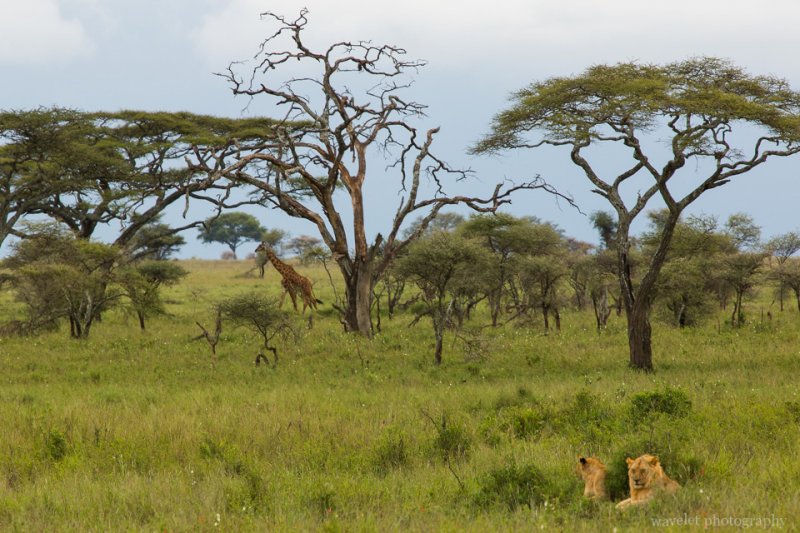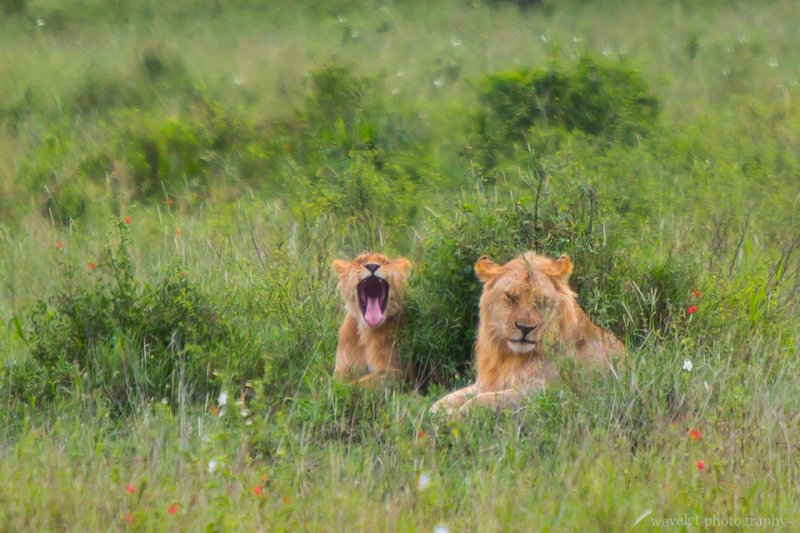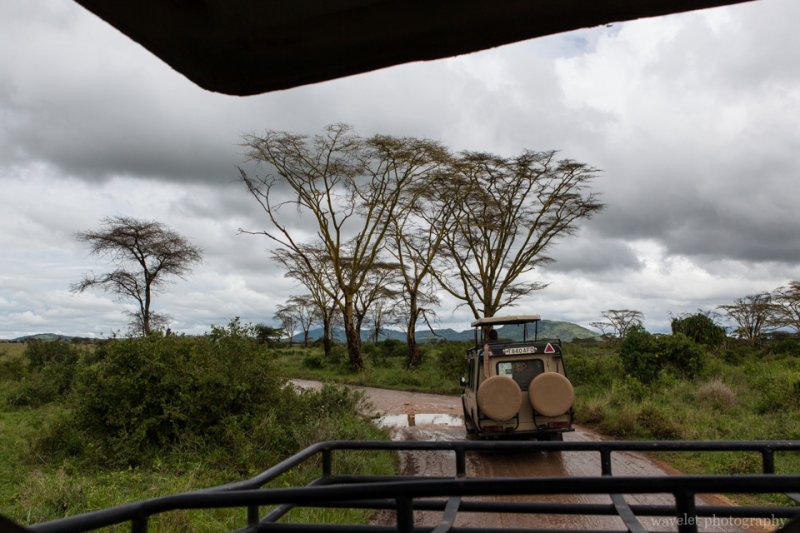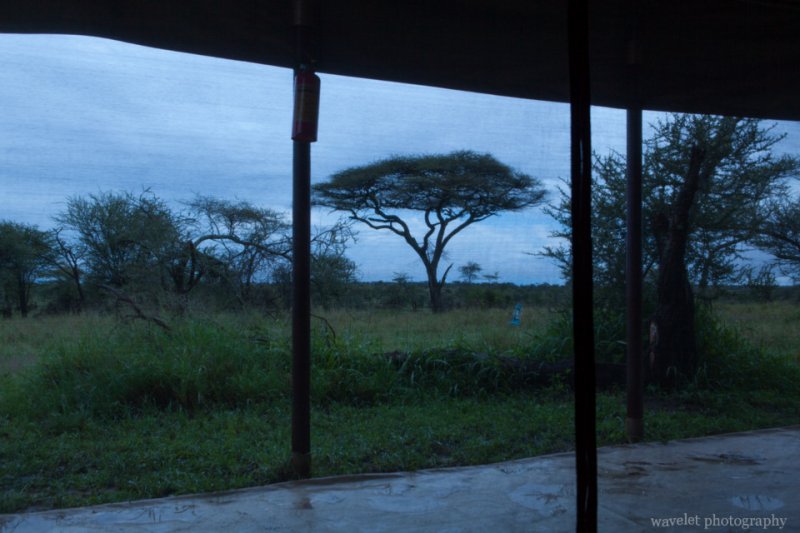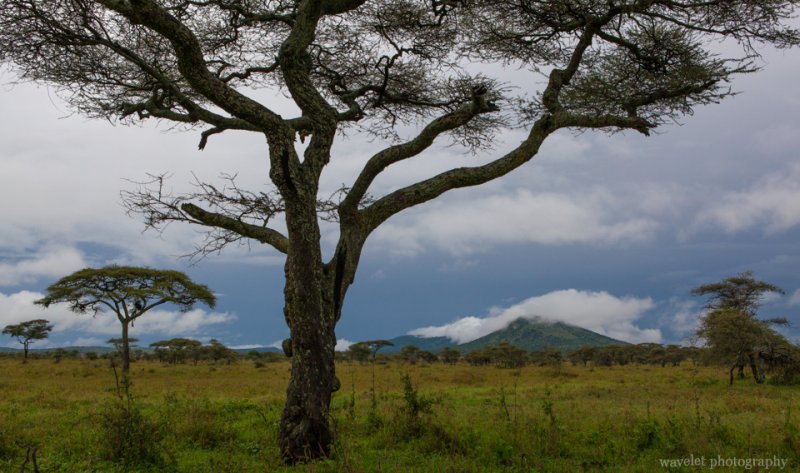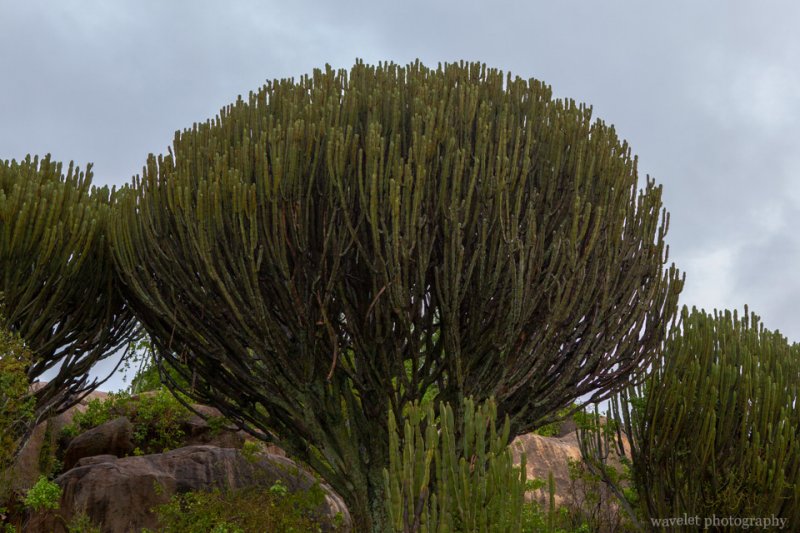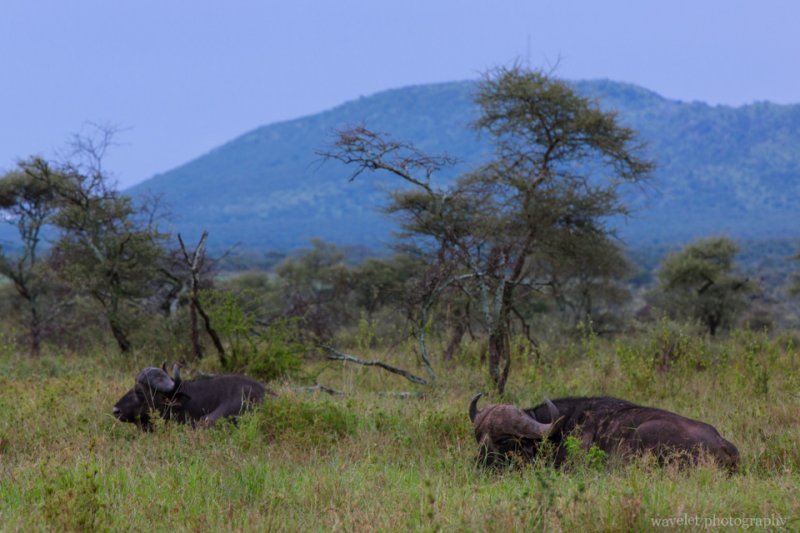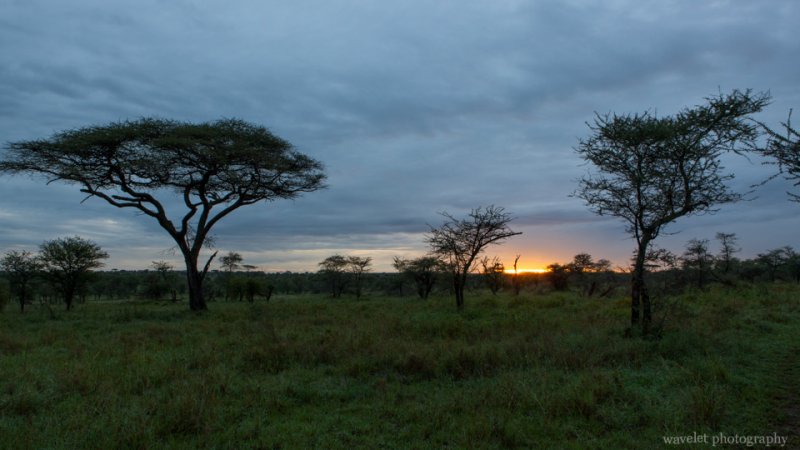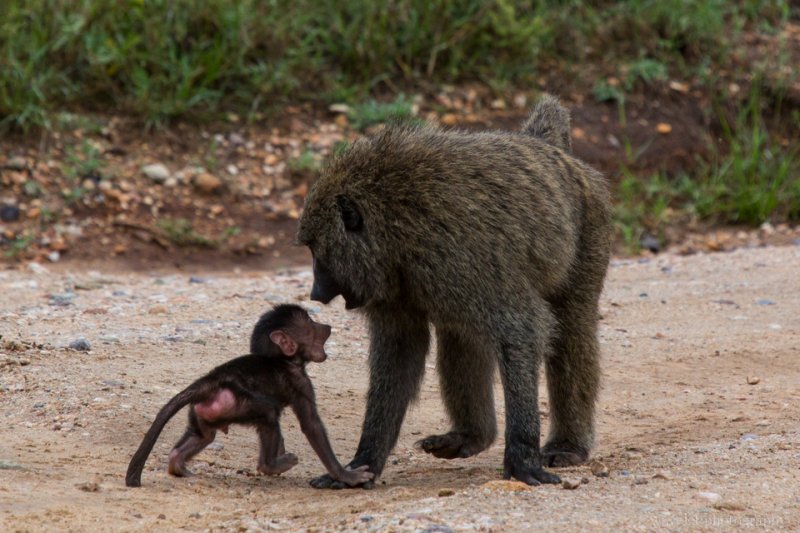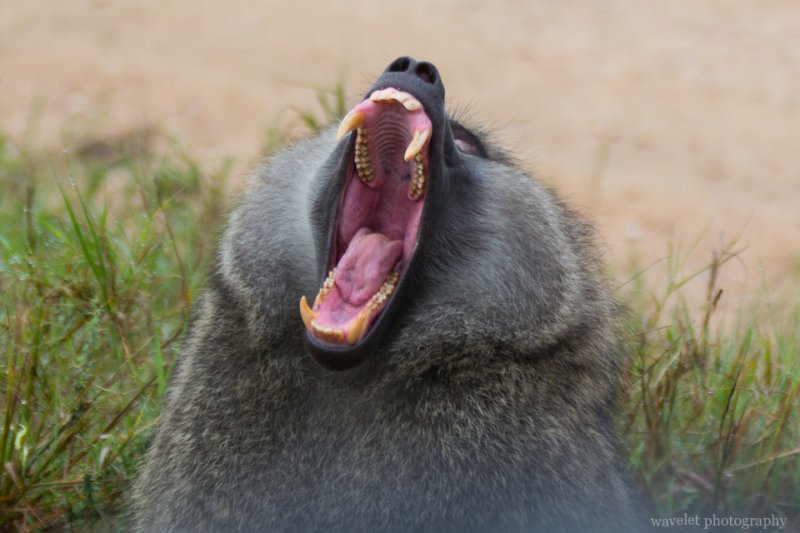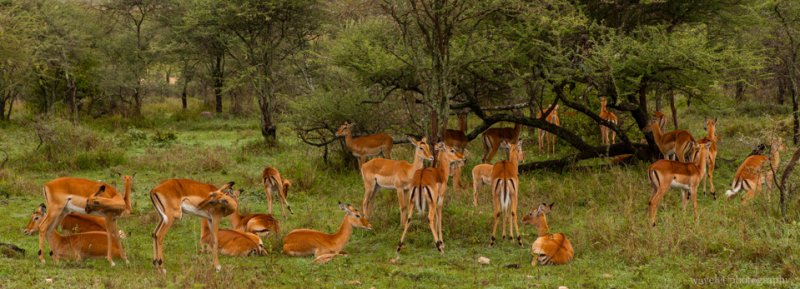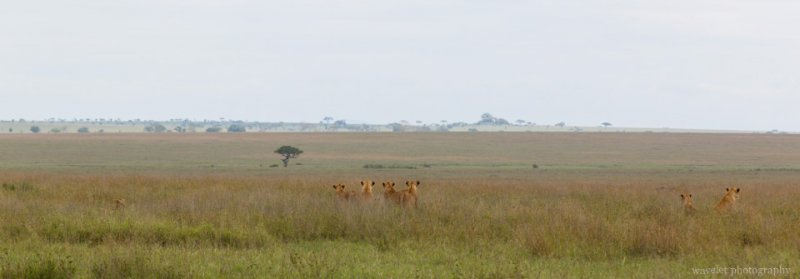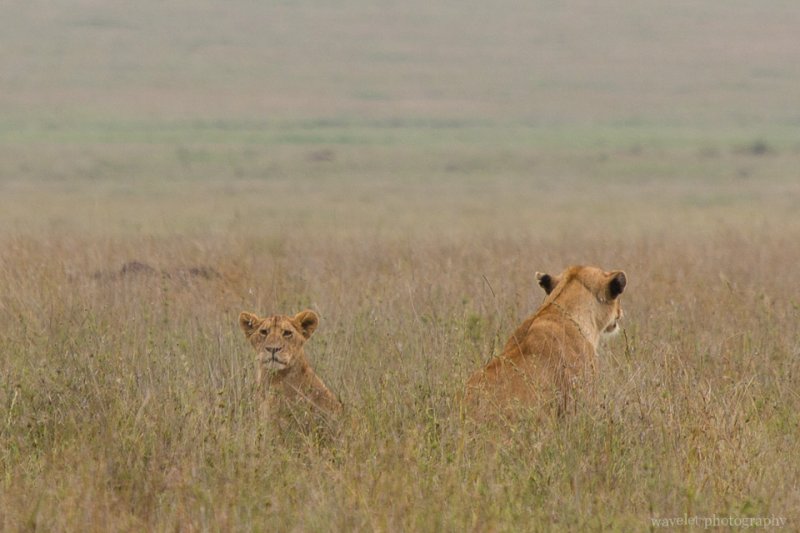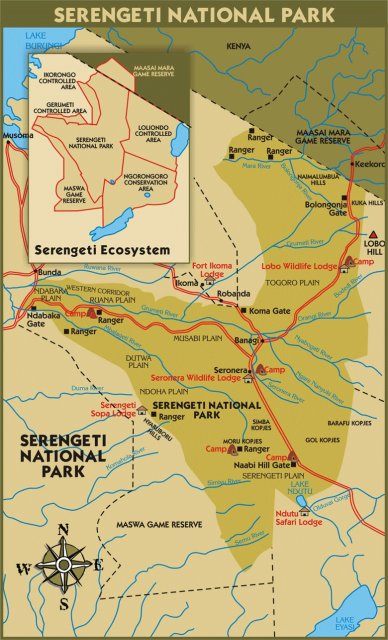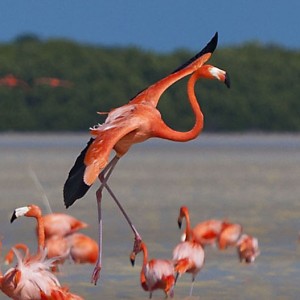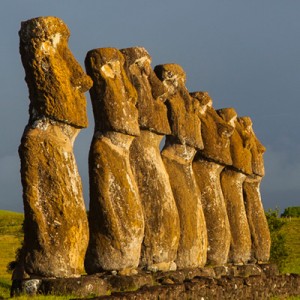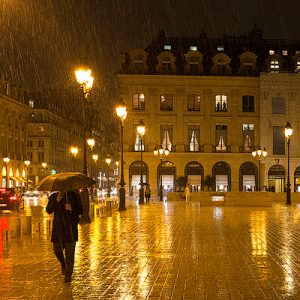2012.12.28~30We reached Naabi Gate at 3:20 pm. This is the southeast entrance of Serengeti National Park. The gate is built next to the Naabi Hill. Unlike most other Kopjes in the Serengeti plains, visitors are allowed to walk off their jeeps and climb the hill. When Justin went to the office to check in, we walked the trail up. It’s an ideal vantage point to view the surrounding area from the top of the hill. Southern Serengeti is a vast and seemingly endless grassland, not even a single tree can be seen. The migration had not reached here yet. The total nothingness was quite a surprise to us.
Leaving Naabi Gate, the road run straight towards northwest. Driving about half an hour, we saw more than ten cars stopped at the road side. There was a female cheetah by herself at around 200 feet from us.
We had a game drive on our way to the camp. It’s been all gravel roads since we left Ngorongoro. We had to take three German girls with us because their car got a flat tire. We should help each other in the wild, but it’s not very convenient when all five adults trying to stand up to watch animals in a mid-size car.
We got to our camp, Ang’ata Camps, at 7 pm. The camp has about 8 to 10 tents. In the center, one bigger tent is used as the dining room, a smaller one is decorated like a living room with a small library in it. Compared with where we lived at Tarangire and Lake Manyara, Ang’ata Camps is much less luxury, but Serengeti is also much further from the city, one should feel fortunate to have a comfort place to spend the night.
At first, we were curious about the pair of buckets hanging high outside of each tent. In fact, in order to provide hot shower for visitors, the staff of the camp have to cook the water with a big pot in a central area; then two workers carry the pot to each tent and pour the hot water into one bucket and the cold water into the other. The water flows into the tent after mixed. It’s not easy to offer these services in an environmental-friendly way in such a remote place. Of course, they charge the premium too.
We started our game driver on the second day at the early morning. Southern Serengeti plain sees more animals in the wet season.
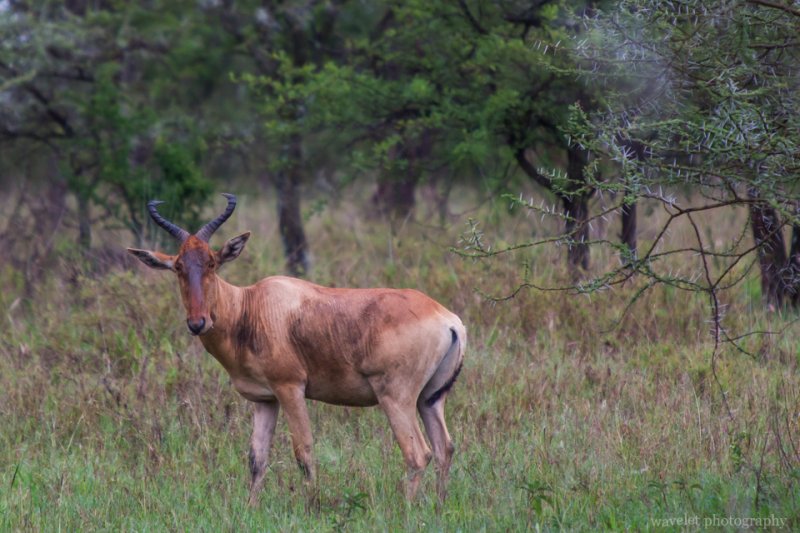
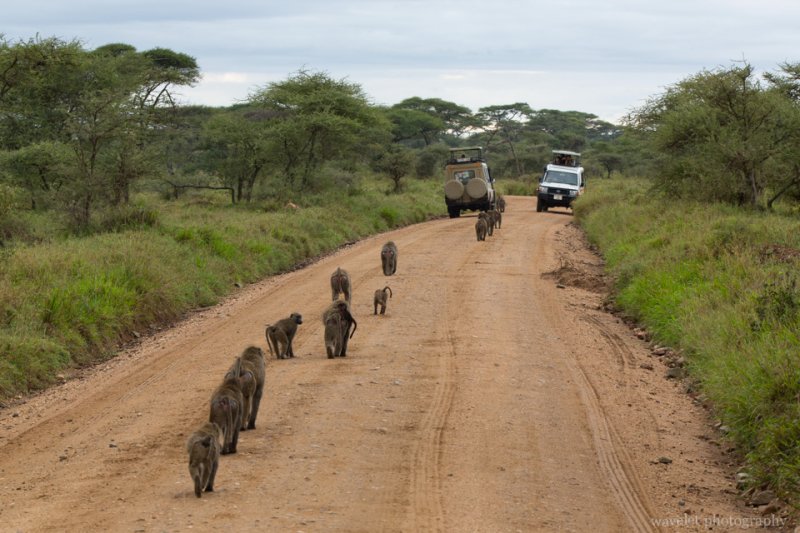
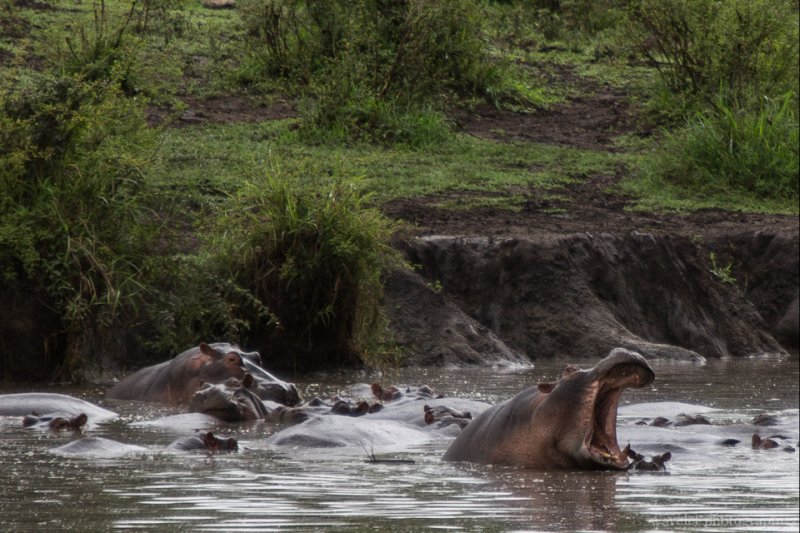
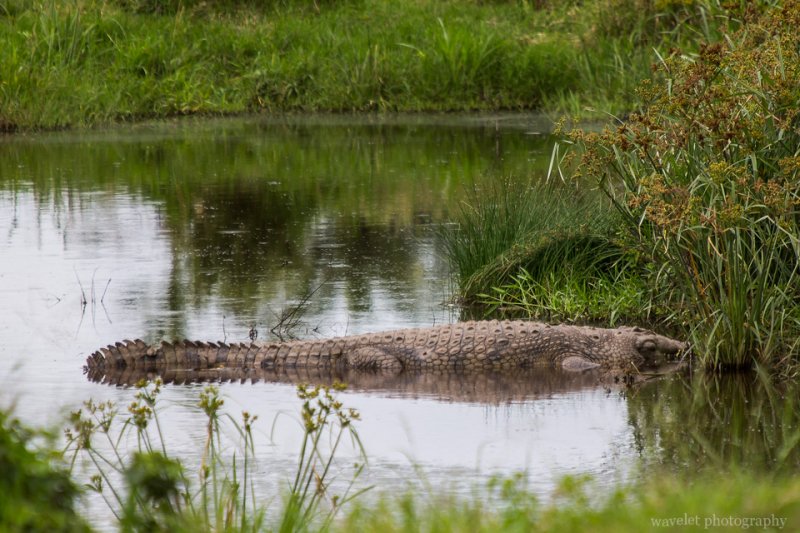
At around 10 am, someone called Justin over the phone and apparently told him there was something interesting somewhere. When we got there, we saw at least 30 jeeps around a kopje. There was a female leopard with her two cubs on the kopje. Leopards are good climbers. They spend most of time stay on the tree branches or hills. This time, she seemed didn’t like to be surrounded by so many bystanders and worried about her cubs safety, so she kept her cubs around and carried them in her mouth and hid them behind rocks.
We watched the leopard family around the kopje for half an hour. It started drizzling from time to time. Continue on our game drive, we saw two young lions sitting in the underbrush, one male and one female. Interestingly, giraffes and antelopes could be seen not very far behind them. Because lions were out of their flight zone, these animals didn’t seem worried at all.
As we on our way back to the camp for lunch, the cloud started gathering in the sky. A huge thunderstorm was upon us.
After our lunch, as we were about to leave for afternoon game drive, the rain started pouring. I hadn’t seen such heavy rain for long time. The rain, like a curtain, hung outside the tent. It’s all looked blue and dark outside. The cloud was so thick, it looked like the night had fallen. Sometimes, the sky at distance showed some hints of light and gave us hope that the rain was about to stop, but soon the light gave up and the dark side took over again.
At 5 pm, the rain finally stopped after 3 hours. We didn’t have much time and we didn’t want to get stuck in the mud either, so Justin decided to take us for a short drive to Seronera Information Center. Seronera information center and the wildlife office sit next to each other on the kopje, surrounded by large candelabra trees. The center holds an open exhibition that explains Serengeti’s ecosystem.
We were shocked by many huge rodent-like animals all over the place. They are hyraxes – in fact, more closely related to elephants. Can you imagine that? Hyraxes here had become very used to humans. The were at every corner, on every tree and made the huge noise.
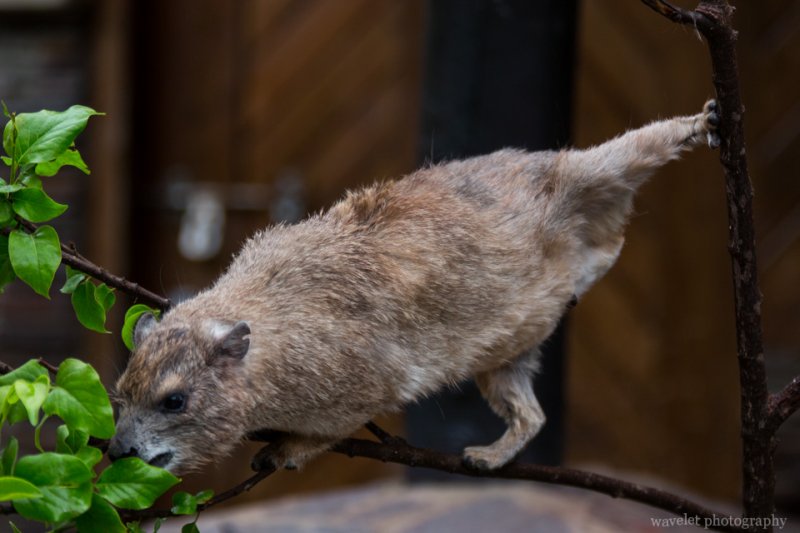
We had a short excursion before retreated to the camp. Unlike more luxury camps in other parks, Ang’ata Camps doesn’t have a dinner menu. The dinner has a soup, 2 or 3 main dishes, usually chicken and veggies, in large panes, and bread and rice.
We checked out Ang’ata Camps the third morning. During our stay, we met another Chinese visitor, who happened to be one of two leading actresses in a famous movie series in China 30 years ago. What surprised me was, although she married to an American, her two sons spoke fluent Chinese.
We continued our game drive on our way leaving the park. We met another troop of baboons. Adult baboons are powerful animals. They are very terrestrial. One of the males showed off his teeth to warn us.
Impalas often form into herds based on the sex and age, This is a group of female impalas.
At one point, we were driving into some hippos’ territory next to a hippo pool. Hippos stay in the water to remain cool during the day, but now several hippos were enjoying the morning walk and having breakfast in grass bushes. Hippos may seem clumsy, gentle or sometimes cute, they are one of most aggressive animals. In fact, hippos kill more humans than any other large animals in African.
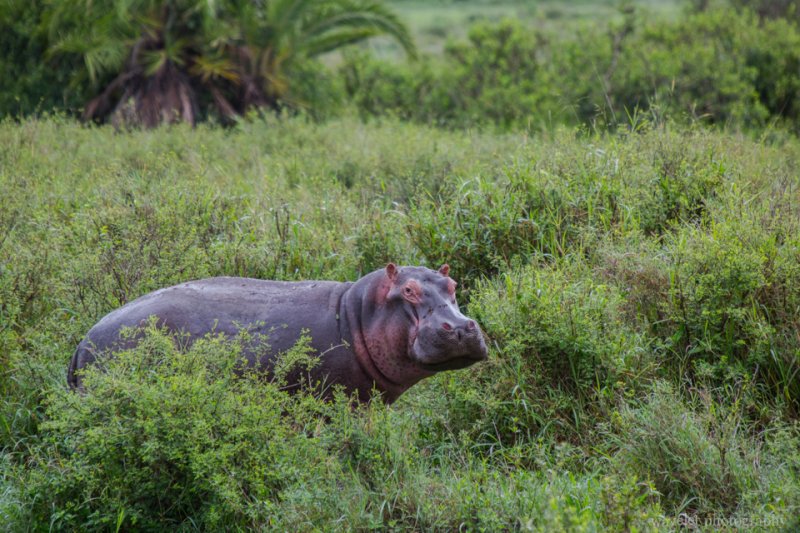
The highlight came when we reached the south of the park facing an open savanna. There were totally 9 lions right in front of us, all females and youths. At first, we were only able to count 5 as others stayed low on the ground. As they revealed themselves one after another, people started cheering in low voices. There were four adults in the middle gazing at far distance away from us. Justin stood on top of our car but he couldn’t see what they are looking at. Lions didn’t make any move. After 20 minutes, they lost interests and started leaving.
At this time of the year, wildebeests in migration mostly gathered at the area between Serengeti National Park and Ngorongoro Conservation Area. When we came two days earlier, the herds hadn’t all moved in. Now, we were at the middle of the great migration.
